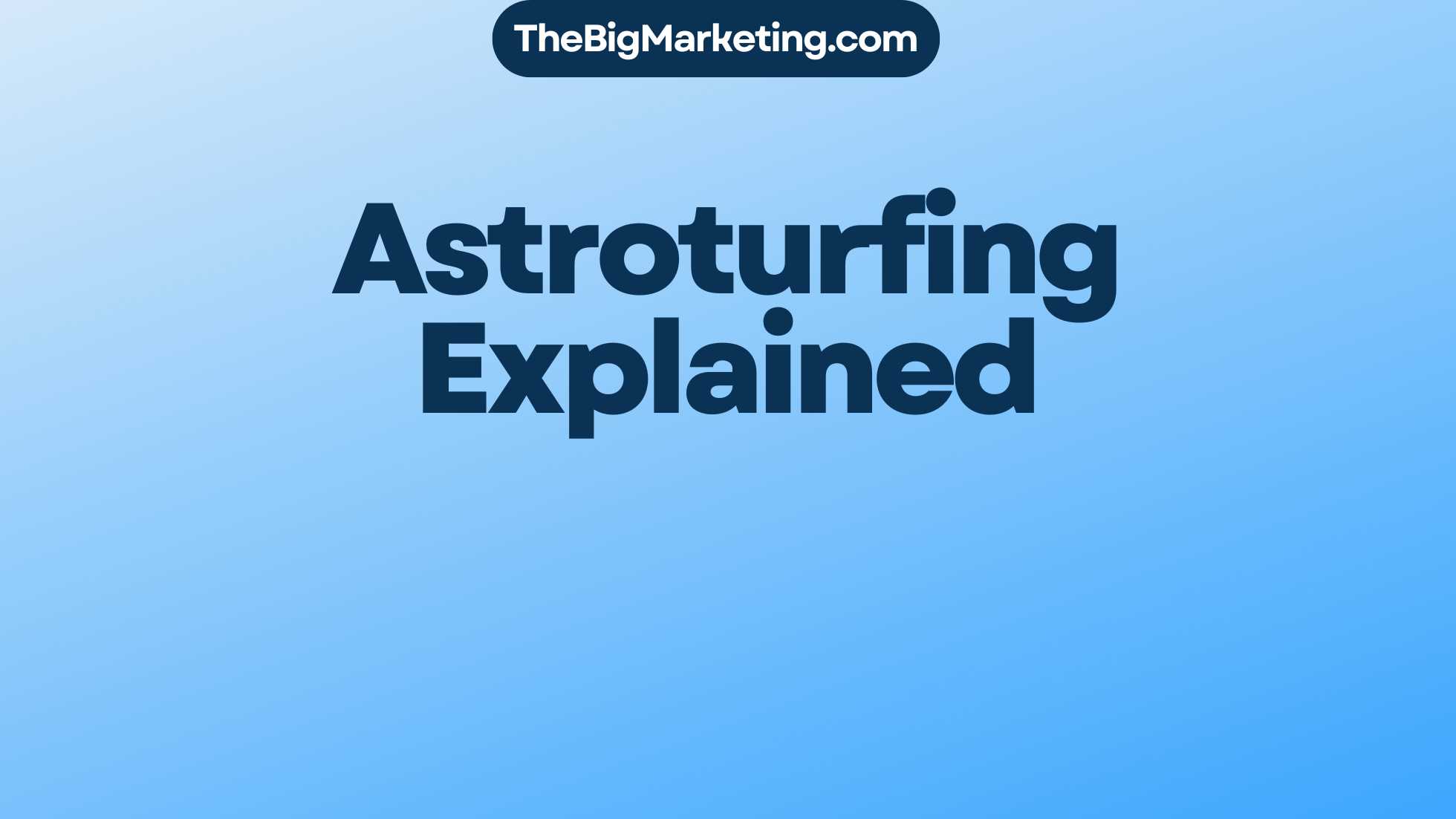Email marketing success relies on understanding key metrics. CTOR, or click-to-open rate, is essential for email campaign optimization. It measures how effective your email content is by comparing unique clicks to unique opens. CTOR provides insights into how well your message appeals to recipients. This helps improve click-through optimization and conversion rate. Let’s explore CTOR’s role and its importance for your email strategies.
Key Takeaways:
- CTOR, or click-to-open rate, compares the number of unique clicks to the number of unique opens in an email campaign.
- Unlike click-through rate (CTR), CTOR focuses on engagement from recipients who actually viewed the email.
- CTOR helps gauge the performance of your email design, messaging, and content, providing insights into recipient interest.
- Benchmarking CTOR against industry averages and analyzing its performance can guide email campaign optimization efforts.
- Strategies for improving CTOR include making emails scannable, personalizing content, and crafting compelling subject lines and calls-to-action.
What is CTOR and how is it calculated?
CTOR stands for click-to-open rate, a key metric in email marketing. It shows how well email content prompts readers to act. The calculation divides unique clicks by unique opens, times 100.
Let’s say an email gets 100 clicks and 150 opens. The CTOR would be 66%. This tells us 66% of people who opened the email clicked on something inside.
CTOR zeroes in on engagement by those who open the email. It spots how intriguing the content is to readers. This approach offers a precise gauge of email content’s success, by showing how it sparked interest.
Marketers use CTOR to assess and improve their email content. A high CTOR means the content hits the mark with readers. A low one points to areas needing work.
Now, picture how CTOR is figured out:
| Number of Clicks | Number of Opens | CTOR Calculation |
|---|---|---|
| 100 | 150 | (100 ÷ 150) × 100 = 66% |
Grasping CTOR and its calculation is vital. It helps in tweaking email campaigns for better results. We’ll next look into CTOR versus click-through rate (CTR), for a full view of these key metrics.
CTOR vs CTR: Understanding the Difference
CTOR and CTR (click-through rate) are crucial in email marketing. They measure how engaging and successful emails are. While they both provide valuable insights, they focus on different areas. This helps marketers get a full picture of their email efforts.
CTOR: Click-to-Open Rate
CTOR measures how effective email content is at engaging recipients who opened the email. It’s found by dividing unique clicks by unique opens, then multiplying by 100. CTOR shows how well content grabs the audience, encouraging them to interact more or convert.
CTR: Click-Through Rate
CTR shows the percentage of people who click on a link in an email compared to all emails sent. It looks at the bigger picture of engagement. It evaluates how well an email drives clicks and guides traffic to a page. CTR helps assess if campaigns make people interested and take action.
CTOR looks at engagement from those who opened the email. But CTR measures engagement from the whole list, regardless of if they opened it.
Both CTOR and CTR are key to understanding email success. They help marketers tweak their strategies and better campaign results. By looking at both, marketers learn what works well in their emails. This helps them improve future campaigns and increase conversions.
Importance of CTOR in Email Campaign Optimization
CTOR, or click-to-open rate, tells us how well email content works. It shows if the email makes people want to click and learn more. This helps marketers understand their audience better and improve their strategies.
A good CTOR means people find the emails interesting. They are more likely to take action. But a low CTOR shows that the emails could be better. They might need changes to grab more attention.
Enhancing Email Content Performance
Looking at CTOR helps find what works and what doesn’t. This insight lets marketers tweak emails to get better results. They learn what their audience prefers.
To improve emails, trying new things is key. Mixing short texts, eye-catching images, and fun clicks can help. Testing different emails can show which one does better. This is known as A/B testing.
Personalization is also important. By customizing emails for each person, you can connect better. This makes people more likely to click and interact.
Monitoring Email Engagement Metrics
There’s more to watch besides CTOR. Open rates and clicks tell a lot about how emails are doing. Looking at everything together gives a full picture of success.
If a lot of people open an email but few click, something is missing. The subject might be catchy, but the content doesn’t keep their interest. This shows there is a need for improvement.
Optimizing Email Campaigns for Better Results
Improving emails never stops. It’s about trying, learning, and adjusting. Fine-tuning subject lines and designs can make a difference. Testing different messages helps find what speaks to the audience.
Knowing your audience is crucial. By dividing your email list into groups, you can send more targeted messages. This increases the chances of getting better results.
Example of CTOR Optimization
Let’s examine how enhancing email content can boost performance:
| Email Metric | Before Optimization | After Optimization |
|---|---|---|
| Open Rate | 25% | 28% |
| Click-Through Rate | 8% | 12% |
| Conversion Rate | 3% | 5% |
| CTOR | 32% | 43% |
By tweaking email strategies, all key metrics improved. This shows the changes positively affected how people interact with emails.
Working on CTOR is continuous. Through analysis and trying new approaches, marketers can better their campaigns. Focusing on this metric helps in achieving greater success.
Strategies for Improving CTOR
To boost your CTOR and improve email engagement, try these tactics:
- Email Scannability: Make sure your emails are easy to scan. Use clear text, small content blocks, headings, and sharp pictures. This helps readers quickly understand the main points when they check their emails.
- Placement of Important Information: Start your email with key info to grab attention fast. Then, organize your message to smoothly lead to your call-to-action (CTA). This method keeps readers hooked.
- A/B Testing: Use A/B testing to fine-tune your emails. Change subject lines, CTA text, colors, and design to see what works best. This will show you what captivates your readers and improves CTOR.
- Personalization: Personalized emails connect more with recipients. Segment your list by demographics, likes, or past actions. This makes content feel tailored, boosting opens, clicks, and CTOR.
- Email Segmentation: Split your email list into segments for more targeted messages. Tailoring emails to specific interests boosts engagement and helps your CTOR.
Using these tactics, you can make your emails more engaging and lift your CTOR. Always review your results to refine your strategies for better performance.
Example of Effective Email Segmentation:
| Segment | Email Content | CTOR |
|---|---|---|
| Segment A: New Subscribers | Welcome email with a personalized discount code | 28% |
| Segment B: Frequent Shoppers | Exclusive offers tailored to previous buys | 34% |
| Segment C: Inactive Subscribers | Campaign to re-engage with a special offer | 26% |
Benchmarking CTOR and Setting Goals
It’s key to benchmark CTOR against industry averages to see how well an email campaign runs. A good CTOR is between 20% and 30%. Comparing it with industry standards helps understand campaign success. Analyzing CTOR shows where to enhance email engagement and conversions. Marketers should look at industry-specific email benchmarks to set their CTOR right.
To benchmark CTOR, marketers need industry-specific email benchmarks. These comparisons offer data that show how successful email campaigns are in their field. By looking at these averages, marketers can see if their campaigns do better or worse. This helps them find ways to get better results. They set realistic goals this way too.
Benchmarking CTOR shows how well email campaigns do. A high CTOR means content connects well with recipients. This leads to more engagement and potential sales. A low CTOR shows a need for better email content to up engagement.
Goals based on CTOR benchmarks are crucial for tracking progress. Goals should be SMART: specific, measurable, attainable, relevant, and time-based. An example goal is boosting CTOR to 25% in three months. This involves better content and personalizing strategies.
Example Email Performance Benchmarks
Here are email performance benchmarks for e-commerce:
| Email Performance Metrics | Industry Average |
|---|---|
| Open Rate | 20.5% |
| Click-Through Rate (CTR) | 3.2% |
| Click-to-Open Rate (CTOR) | 15% |
| Conversion Rate | 4.7% |
Comparing an e-commerce campaign’s CTOR to the 15% industry average offers insight. A 10% CTOR means it’s time to improve to meet the standard. But, a CTOR of 20% or more means the emails hit the mark. They are engaging more recipients.
By benchmarking CTOR and setting goals with industry averages, marketers can make their email campaigns better. This enhances chances for engagement and conversions.
Making Emails More Clickable
To make emails more clickable, start by optimizing their layout. Use clear, easy-to-read sections to boost readability. This encourages people to read and interact with your email. Break your content into smaller parts with headings. Also, use lists to highlight main points so readers can find what they need fast.
Personalization for Enhanced Clickability
Personalizing emails can really boost their clickability. When emails match what recipients like or did before, they pay more attention. Try dividing your email list by interests or past behavior. This way, you can send emails that speak directly to each person. Adding in things like dynamic content or personalized suggestions can also make emails more clickable.
Compelling Subject Lines
Great subject lines drive people to open emails. They’re the first thing people see and can make them curious or eager. For more clicks, subject lines should hint at the email’s content but also spark interest. A creative subject line can make a huge difference in getting more opens and clicks.
Persuasive CTAs
CTAs guide readers on what to do next. To make them more clickable, they should be to the point and action-focused. The text should show what benefit the reader gets, making them want to click immediately. Putting CTAs in key spots, like at the end of sections or in the email footer, can help get more clicks.
Images can also make emails more enticing. Choose images that complement your message to catch the reader’s eye. Placing images near CTAs or in certain parts of the email helps draw attention. This strategy can lead to more clicks.
To boost your email’s effectiveness, apply these techniques. Make your emails easy to skim, customize your content, create interesting subject lines, use strong CTAs, and include appealing images. Doing this can raise your click-through rates and lead to better engagement and results from your email campaigns.
Analyzing CTOR and Optimizing Results
Understanding your CTOR, or click-to-open rate, is key in email marketing. It shows how relevant and effective your email content is. By analyzing and improving your CTOR, you can boost your email campaign’s performance.
Seeing a high open rate but a low CTOR can mean two things. Your subject line was catchy, but the email’s content or offer didn’t hold the reader’s interest. But, if you have a low open rate and a high CTOR, it shows that your content is appealing to those who choose to open the email.
Improving CTOR starts with reviewing your campaign metrics closely. Look at how your emails perform and see what could be better. Make sure your content is engaging and meets your audience’s needs. Trying out different subject lines, email designs, and call-to-action spots through A/B testing can also help find what works best.
Segmenting your email list can also drive better results. Group your audience by details like demographics or past behaviors. This lets you send more personalized content. Personalized emails are more likely to grab attention and get people to act, boosting your CTOR and conversions.
Optimizing your offers is vital for a successful email campaign. Your offers must be exciting, valuable, and match what your audience wants. Be clear and direct about what you’re offering, showing off why it’s great. Adding a sense of urgency or exclusivity can also motivate quick responses.
Using data to guide your decisions can change how you manage your email content and strategies. Keep an eye on your CTOR and tweak your approach based on what you find. This way, you’ll give your audience content that resonates with them, leading to more conversions and better email marketing outcomes.
Importance of CTOR in Email Marketing Strategies
CTOR is key in email marketing strategies. It measures how effective email content is in driving conversions. Tracking CTOR provides insights into how engaging your emails are.
Knowing what content engages people allows brands to create better email strategies. CTOR shows how well email content works in getting conversions. It gives valuable data for analyzing ROI in email strategies.
With CTOR focus, marketers can see how their emails perform. They can make informed changes to improve conversions. CTOR highlights areas needing better email content and design.
Benefits of CTOR in Email Marketing Strategies
1. Performance Measurement: CTOR assesses email content’s impact on engagement and conversions. It shows which emails are effective.
2. Optimization of Email Content: CTOR analysis helps fine-tune email campaigns. Marketers can boost engagement and conversions by tweaking email content.
3. Targeted Campaigns: CTOR assists in crafting campaigns for specific groups. Understanding high CTOR content helps tailor emails for better conversion rates.
4. Conversion Tracking: CTOR is vital for tracking email marketing success. Together with other metrics, it helps measure how well campaigns perform.
In summary, CTOR significantly shapes email marketing strategies. It spots how emails impact conversions. Tracking CTOR helps fine-tune campaigns for better outcomes.
Conclusion
CTOR, or click-to-open rate, is important in email marketing. It shows how effective email content is at driving engagement and sales. By looking at the ratio of unique clicks to opens, marketers can see how well their content is doing.
Improving CTOR means using smart email engagement methods. This includes making emails easy to scan, personalizing messages, writing engaging subject lines, and using strong calls-to-action (CTAs). These steps can make CTOR better and increase click-through rates.
It’s good to compare your CTOR with others in your industry. This helps understand if your email marketing is working well. By looking at CTOR and using data to make choices, marketers can make their email campaigns better and boost sales.
To wrap it up, CTOR helps marketers make their email campaigns stronger. Using good email techniques and checking CTOR’s performance can lead to better email strategies and stronger results.





